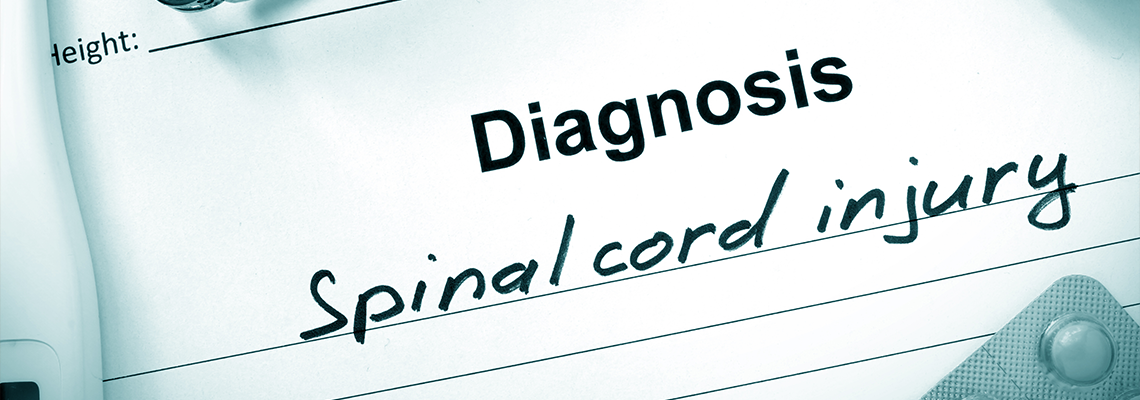
A spinal cord injury can instantly change every aspect of a person’s life. From mobility challenges to extensive medical treatments, the physical and emotional impact can be overwhelming.
Beyond recovery, victims often face mounting medical expenses, rehabilitation costs, and lost income. For many, the future can feel uncertain—especially when determining how to prove the full extent of their losses in a legal claim.
That’s why detailed medical documentation plays such a vital role. Accurate, organized records not only confirm the severity of the injury but also directly affect the outcome of compensation claims. At Guerra Law Firm PC, we help clients in McAllen, Texas, and throughout Southern Texas build strong spinal cord injury cases supported by comprehensive medical evidence.
With Attorney Manuel Guerra, we work to help injury victims recover the financial support they need to rebuild their lives. Reach out to us today to learn how we can assist you or your loved one on the path to justice and recovery.
The Importance of Medical Documentation in Spinal Cord Injury Claims
When filing a spinal cord injury claim, medical documentation is the foundation of the entire case. It’s the primary evidence that demonstrates the severity of the injury, its causes, and the long-term consequences. Without clear medical proof, insurance companies or opposing counsel may downplay the extent of harm, jeopardizing fair compensation.
In spinal cord injury cases, proper documentation helps establish the link between the accident and the resulting impairments. It verifies the diagnosis, treatment requirements, and prognosis, all of which contribute to determining the financial damages owed.
These documents also serve as an ongoing record of progress—or setbacks—during recovery, which can impact both settlement negotiations and court decisions.
Medical records are not just paperwork; they’re the voice of the injured person’s experience. They tell the story of how life changed after the injury and provide a clear, factual foundation for compensation.
Key Types of Medical Records Needed
A strong spinal cord injury claim relies on a variety of medical documents, each contributing a specific piece of evidence. Gathering these records early and maintaining them throughout recovery strengthens the case.
Initial emergency care reports: These records detail the first medical evaluation following the injury, including hospital admission notes, X-rays, and diagnostic scans. They confirm the nature and timing of the injury, which is critical for proving causation.
Diagnostic imaging and test results: MRIs, CT scans, and nerve conduction studies reveal the exact location and severity of spinal cord damage. These objective results provide a clinical basis for the claim.
Hospital and surgical records: These include physician notes, surgical reports, medication logs, and discharge summaries. They outline all medical procedures performed, showing the extent of treatment and recovery challenges.
Rehabilitation and therapy documentation: Physical therapy, occupational therapy, and mobility training reports track the patient’s progress and limitations over time.
Specialist evaluations: Reports from neurologists, orthopedic surgeons, and pain management physicians offer detailed insight into long-term effects and required treatments.
Each of these documents collectively forms the medical foundation of the case. Without them, proving the scope and financial impact of a spinal cord injury becomes significantly harder.
Proving the Extent and Impact of the Injury
Insurance companies often scrutinize every detail of a claim, making it essential that medical documentation accurately reflects the true impact of the injury. Spinal cord damage can range from partial impairment to complete paralysis, and the associated costs vary greatly depending on severity.
Medical professionals use detailed evaluations to classify injuries, such as incomplete (partial loss of function) or complete (total loss of function below the injury site). These classifications influence both medical treatment and compensation value.
For instance, according to the National Spinal Cord Injury Statistical Center (NSCISC), the average yearly cost of care for someone with high tetraplegia can exceed $1 million in the first year alone.
Documentation that captures not only the physical condition but also the emotional and psychological toll provides a fuller picture. Mental health evaluations, pain assessments, and reports of daily living limitations are vital in illustrating the broader consequences of the injury.
Establishing Causation Through Medical Evidence
One of the most contested aspects of spinal cord injury claims is proving that the accident directly caused the injury. Causation must be clearly established through consistent medical evidence.
Accident scene reports and emergency medical evaluations should align with diagnostic findings. For instance, if the spinal damage is consistent with a fall, vehicle crash, or workplace incident, medical experts can corroborate how the trauma occurred.
Statements from treating physicians or medical experts may also be used to explain how specific injuries relate to the event in question.
Critical elements to support causation include:
Timeline consistency: Medical records should show immediate treatment following the incident.
Physician notes: Consistent entries linking the injury to the reported cause strengthen credibility.
Diagnostic alignment: Test results should reflect trauma consistent with the accident described.
Accurate and chronological documentation not only strengthens the link between the injury and its cause but also minimizes disputes during negotiations or in court.
Long-Term Medical Documentation and Prognosis Reports
Spinal cord injuries often result in lifelong medical needs. Therefore, ongoing documentation is just as important as initial medical reports. Records that track continued care and prognosis help project future expenses—an essential part of compensation claims.
Examples of long-term documentation include:
Rehabilitation progress notes: Track improvement or plateauing mobility, independence levels, and therapy outcomes.
Assistive device prescriptions: Include wheelchairs, braces, or home modifications that reflect ongoing costs.
Future treatment recommendations: Doctors often predict additional surgeries, therapy, or pain management programs needed in the coming years.
By documenting these details, medical professionals provide the evidence necessary to calculate future damages, including lost earning potential and ongoing care needs.
Long-term documentation reflects not just recovery but also adaptation. For many victims, it proves that their injury is not temporary—it’s a permanent life adjustment that requires continued financial and medical support.
The Importance of Expert Testimony
Medical experts can interpret and validate the significance of documentation in spinal cord injury claims. Their testimony translates nuanced medical data into understandable evidence for judges, juries, or insurance adjusters.
Experts can clarify how an injury affects daily function, future health, and financial requirements. They can also counter arguments from defense medical witnesses who may try to downplay the severity of injuries.
In many cases, expert testimony makes the difference between partial compensation and full financial recovery. Their independent, professional analysis strengthens credibility and reinforces the validity of all submitted medical records.
Additional Supporting Evidence for Spinal Cord Injury Claims
While medical records form the backbone of the case, other documentation can reinforce the claim’s strength. Supporting materials often include:
Witness statements: Individuals who saw the accident can confirm how the injury occurred.
Accident reports: Police or workplace safety reports provide official records of the incident.
Employment records: Proof of lost wages or diminished earning capacity supports financial damage claims.
Photographs or videos: Visual evidence of the accident or injury aftermath enhances case credibility.
Each piece of additional evidence works alongside medical documentation to present a complete picture of how the spinal cord injury occurred and how it continues to affect the victim’s life. When presented together, these records leave little room for dispute regarding liability or compensation.
Common Challenges in Collecting Medical Documentation
Obtaining all necessary medical documentation can be challenging, particularly for victims focusing on recovery. Hospitals, specialists, and therapy centers each maintain their own records, which can delay the process. Missing or incomplete documentation can lead to gaps that weaken the case.
We often encourage injured clients to request copies of every medical report, bill, and diagnostic test immediately after treatment. Keeping a detailed log of all medical visits helps maintain organization. Electronic medical records (EMRs) can also simplify retrieval and sharing with legal representatives.
When documentation is missing or incomplete, it’s sometimes necessary to request physician affidavits or supplementary evaluations. At Guerra Law Firm PC, we help clients compile, review, and organize their documentation to strengthen every aspect of their claim.
Calculating Compensation Based on Medical Evidence
Medical documentation is essential not only for proving injury but also for calculating damages. Compensation in spinal cord injury cases typically includes both economic and non-economic damages.
Economic damages: These cover measurable costs such as hospital bills, rehabilitation expenses, lost income, and future care needs.
Non-economic damages: These address pain, suffering, emotional distress, and loss of quality of life.
Medical records play a direct role in determining both categories. For example, therapy notes might justify compensation for emotional suffering, while surgery records quantify medical costs. Detailed and consistent documentation supports a more accurate, higher-value claim.
Thorough recordkeeping doesn’t just help prove what’s already been spent—it projects what will likely be needed in the future, ensuring victims receive fair compensation for lifelong effects.
How Legal Representation Strengthens Medical Claims
Having experienced representation helps injured individuals make the most of their medical documentation. Attorneys can identify missing evidence, work with medical experts, and present the information in a way that resonates with courts or insurance companies.
We assist clients in requesting all relevant records, obtaining medical opinions, and ensuring the documentation supports both causation and long-term damages. Our attorneys—Manuel Guerra, Andrew Coward, and Perla George—understand how to interpret medical data and translate it into compelling legal arguments.
By coordinating with medical professionals, we help clients focus on recovery while we handle the documentation and legal strategy. This comprehensive support makes the process smoother and strengthens the chances of full financial recovery.
Contact an Experienced Lawyer
Spinal cord injury cases demand more than sympathy—they require precise medical documentation that accurately reflects the injury’s true impact. Every MRI, surgical report, and rehabilitation note can determine how much compensation a victim receives.
At Guerra Law Firm PC, we’re dedicated to helping clients in McAllen, Texas, and throughout Southern Texas gather and present the evidence needed to secure rightful compensation. Attorney Manuel Guerra works diligently to help injured individuals recover not only financially but also emotionally and physically.
If you or a loved one is facing the life-altering effects of a spinal cord injury, don’t wait to get help. Reach out to us today to discuss your case and start building a claim supported by strong medical documentation.

